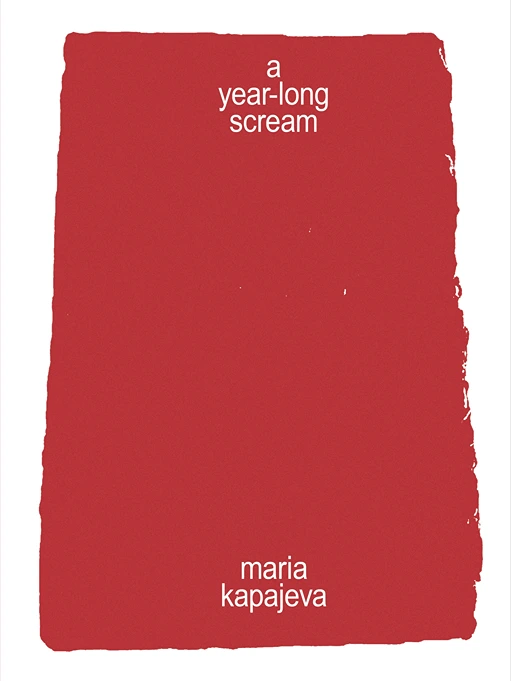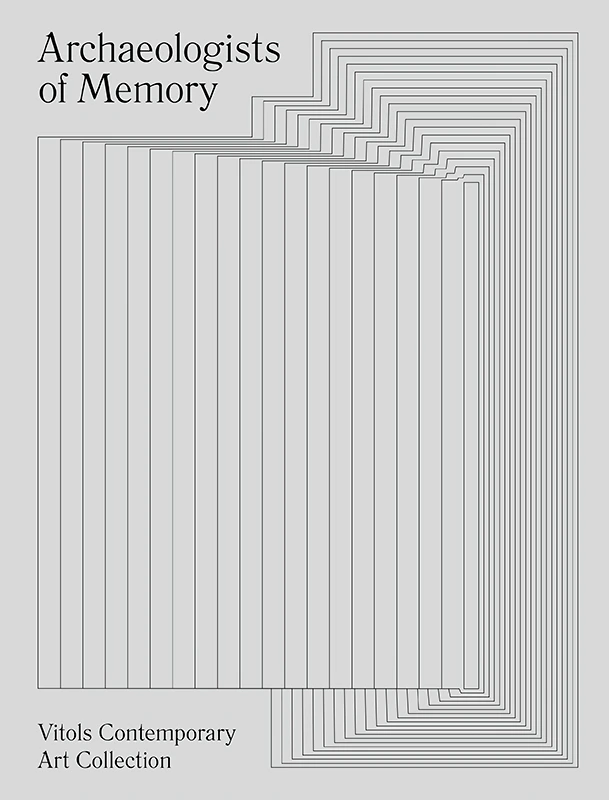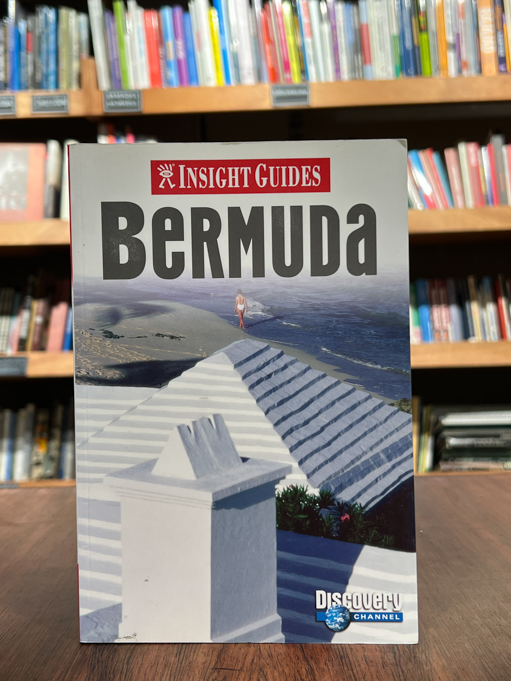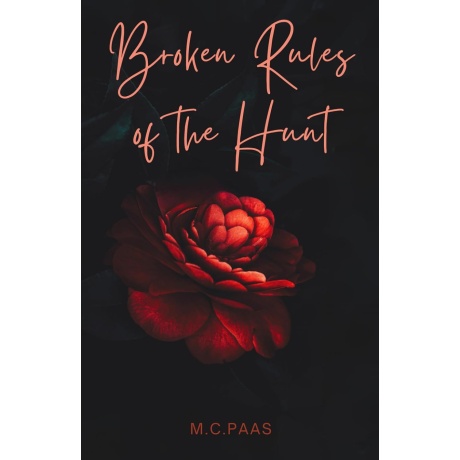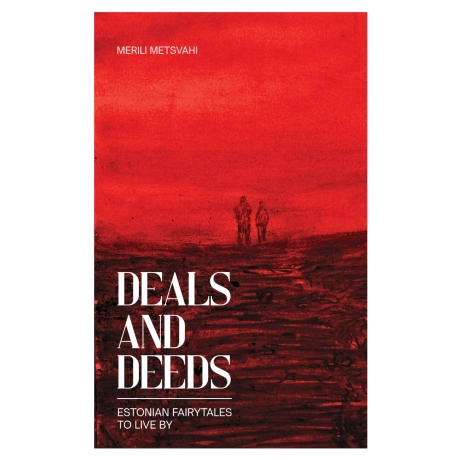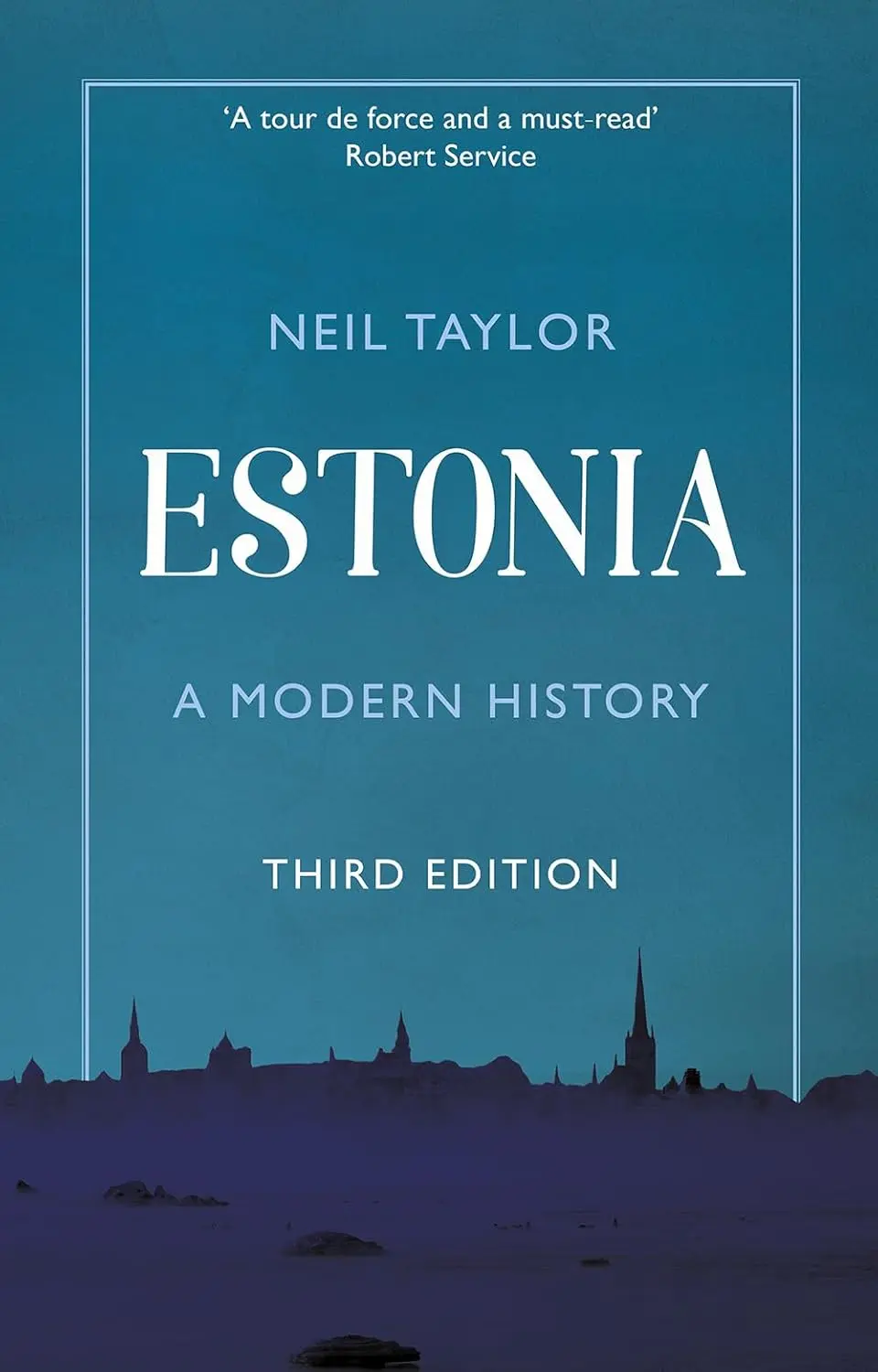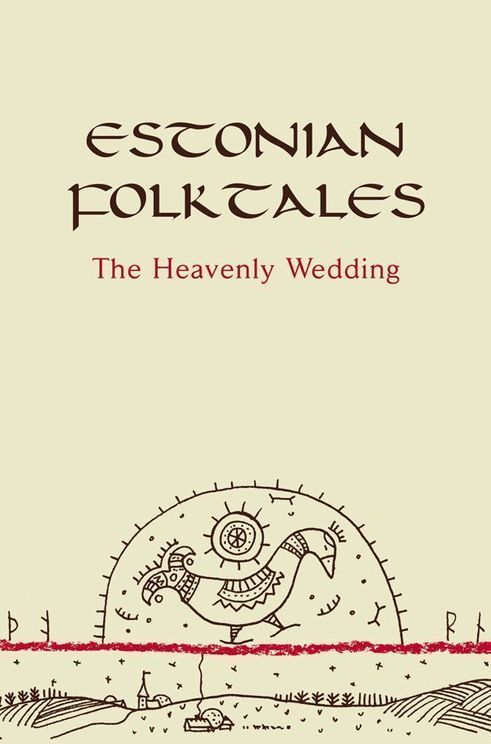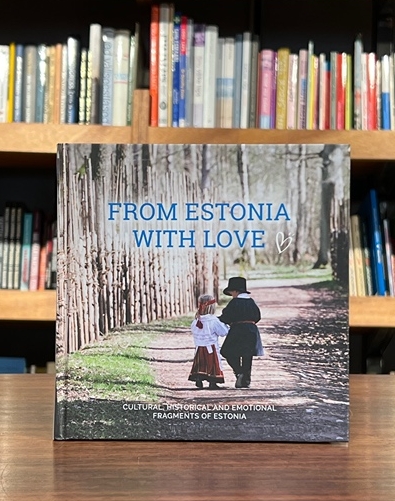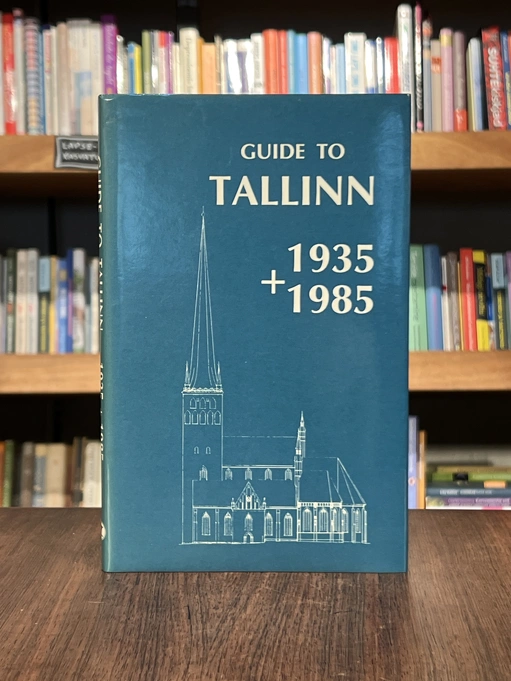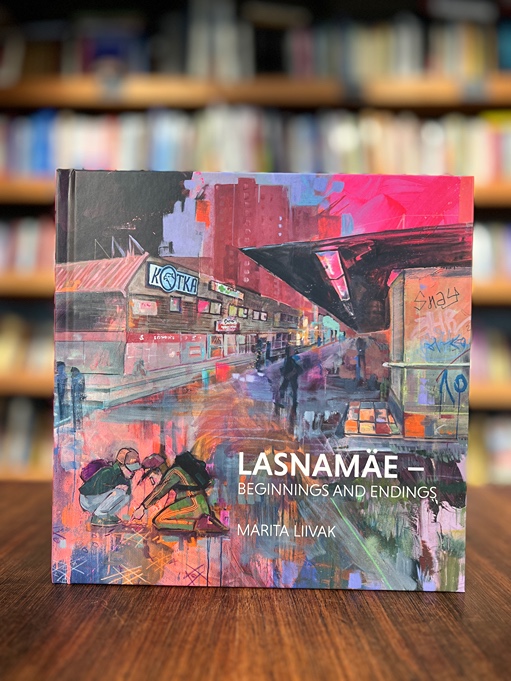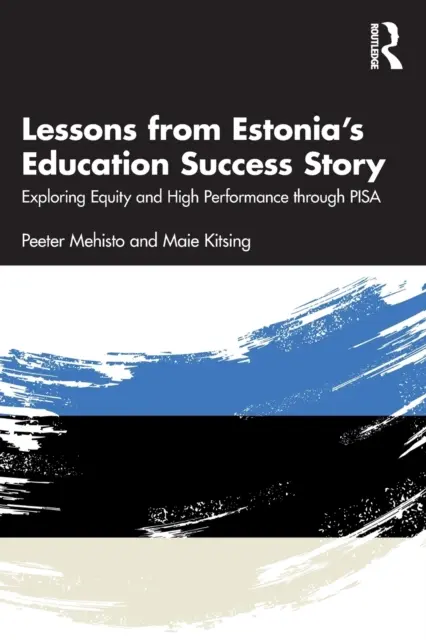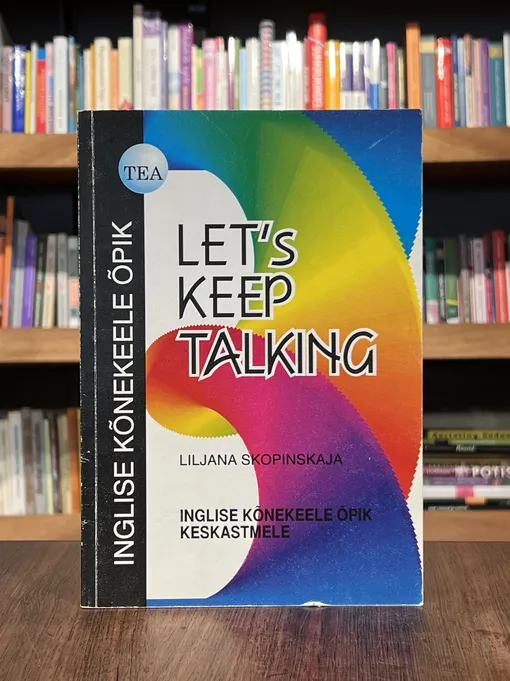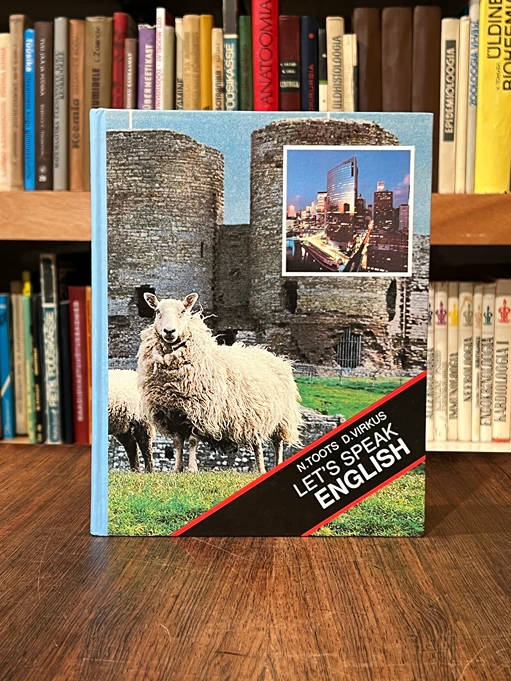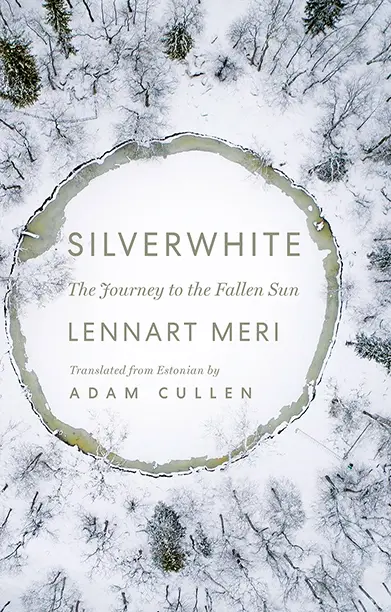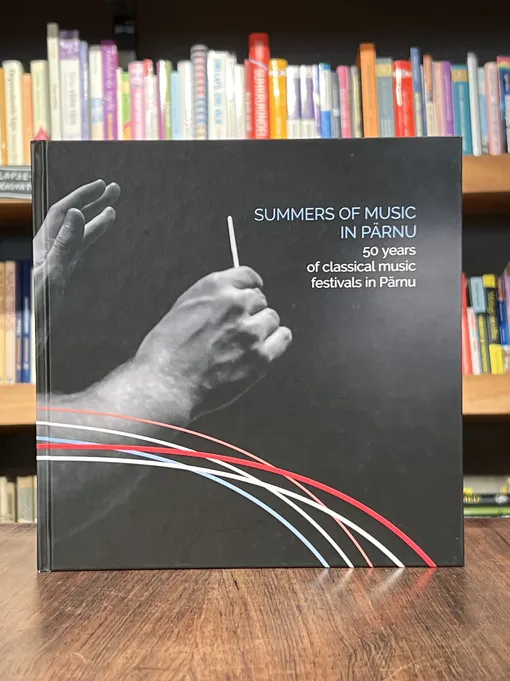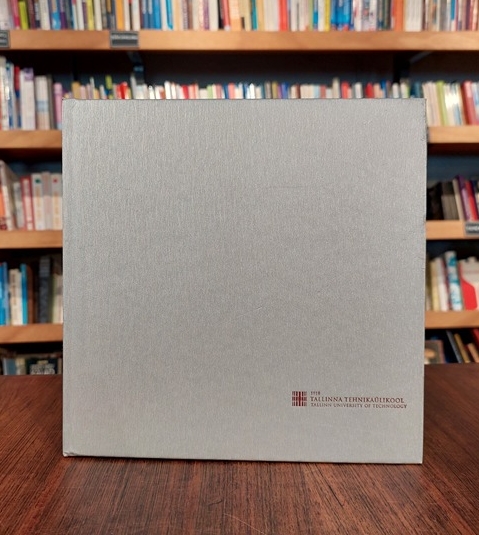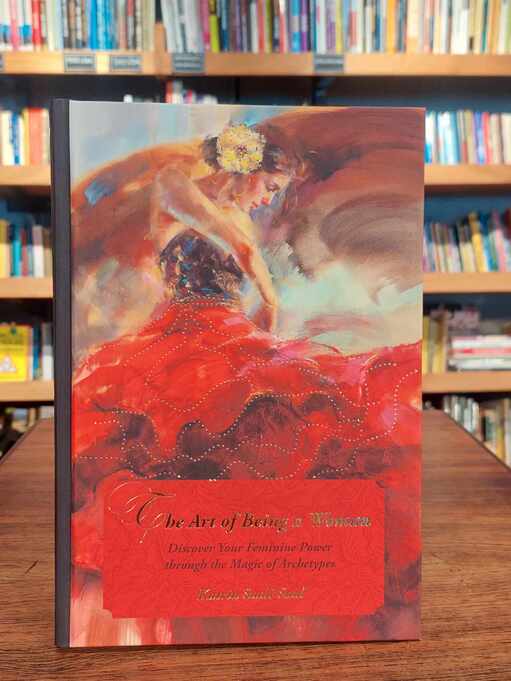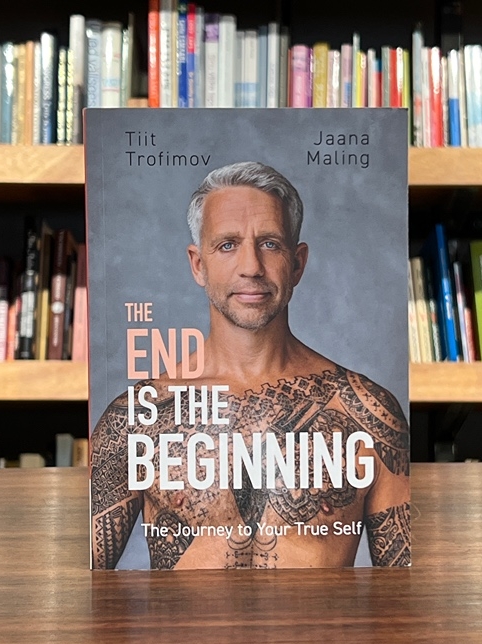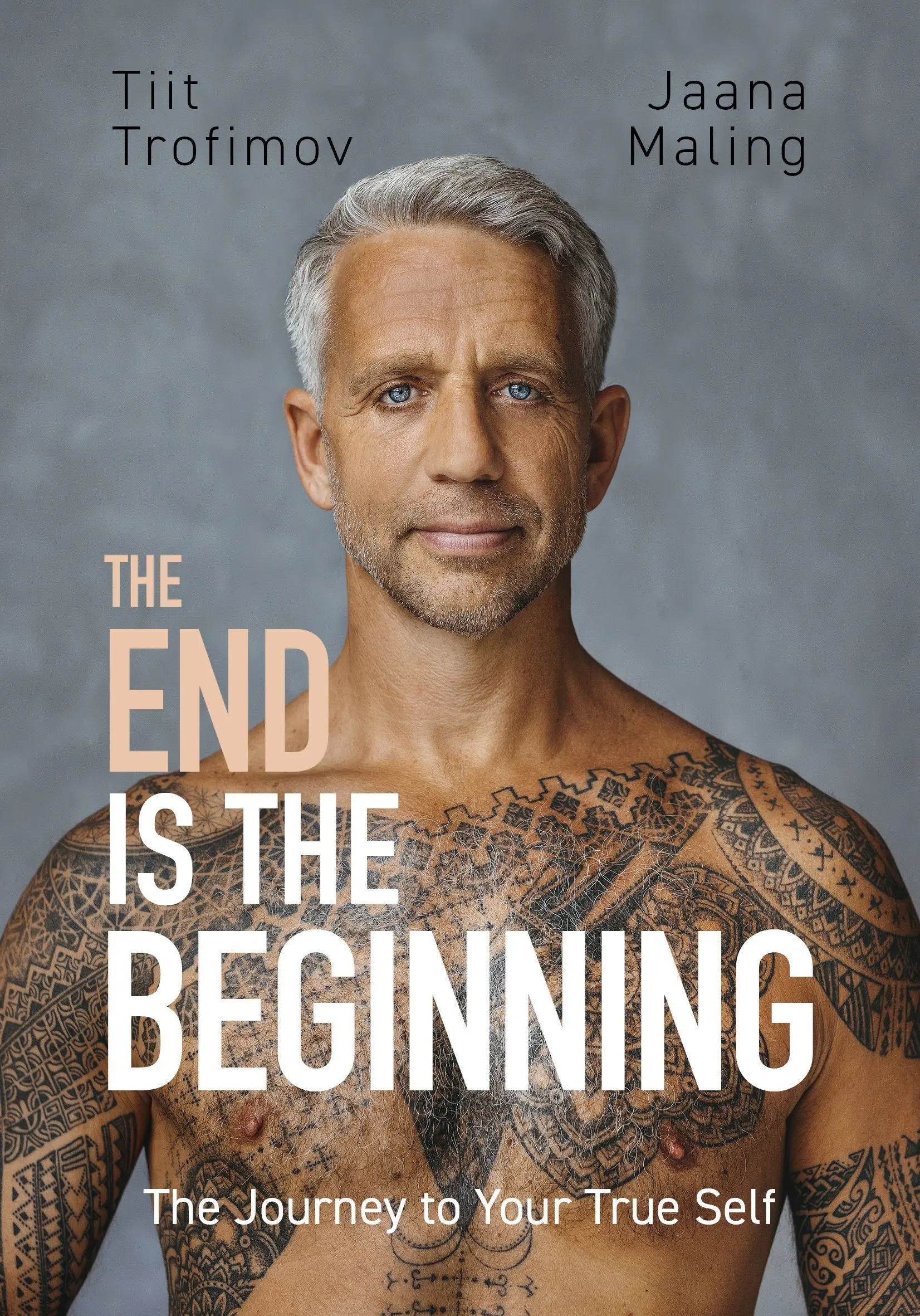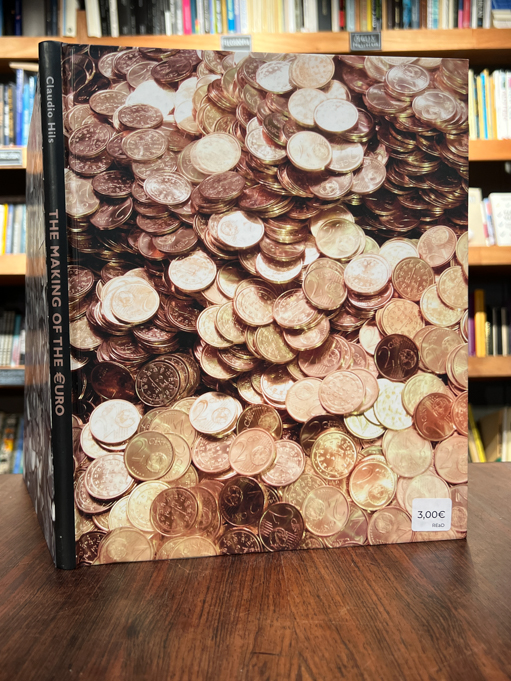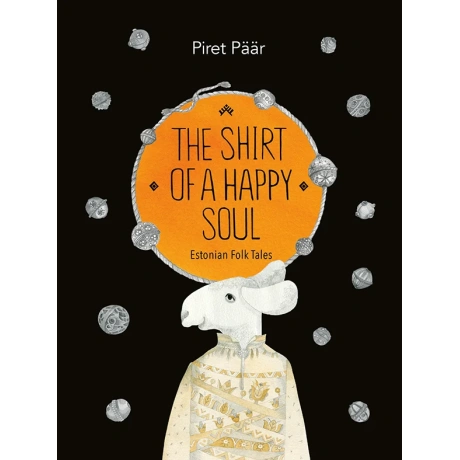Tooted
A collection of texts by Maria Kapajeva that she wrote in Russian and English. She started writing the book on February 24, 2022 – the day the full-scale war in Ukraine began. The book is written in a personal style and deals with themes of identity, collective and individual responsibility and guilt, language and belonging, feminism, and the stories of some of the Ukrainian refugees that the author encountered during the year.
Raamat kaasneb näitusega "Mälu arheoloogid. Kunstikogu Vitols Contemporary" Kumu kunstimuuseumis (18.11.2022–09.04.2023).
Näitus ja käesolev raamat on esimene teemapõhine sissevaade Baltimaade ühte huvitavamasse kunstikogusse Vitols Contemporary, mis keskendub Ida- ja Kesk-Euroopa kaasaegsele kunstile ja kuhu kuulub ligi 1000 teost enam kui 150 autorilt.
Kollektsionääride Irina Vītola ja Māris Vītolsi sõnul on kogu ajendatud nende huvist Ida- ja Kesk-Euroopa regiooni sotsiaalsete ja poliitiliste muutuste vastu pärast Berliini müüri langemist 1989. aastal. Samuti tõstavad nad esile piirkonna kultuurilist mitmekesisust.
Raamatust saab lugeda intervjuud Irina Vītola ja Māris Vītolsiga, Maarja Kangro novelli ja Tanel Randeri esseed ning see sisaldab ka näitusel eksponeeritud teoste kataloogi.
Kunstnikud: Viktor Alimpijev, Vladimir Arhipov, Jānis Avotiņš, Matei Bejenaru, Blue Noses Group, Vajiko Chachkhiani, Kristaps Ģelzis, Dmitri Gutov, Severija Inčirauskaitė-Kriaunevičienė, Rasa Jansone, Jānis
"Insight Guides" provide the complete picture through expert and informative text and remarkable photography. Each book is an inspiring background read, serving as an invaluable, on-the-spot companion. They can also be kept as a superb, visual souvenir of a visit. Expert local writers bring to life a destination's history, culture, arts and people. The guides contain detailed, cross-reference maps which means that areas and sites mentioned can be quickly pin pointed. They also incorporate all the travel details and contact numbers visitors will need.
"Kehateraapiline fotoraamat: Yoni portreed" koondab kunstilised ja intiimsed must-valged fotod Eesti naistest, tuues esile iga naise unikaalsuse. Fotoraamat avab naiselikkuse ilu ja erilisuse, pakkudes nii esteetilist elamust kui ka eneseteadlikku rännakut.
Fotoraamat ülistab naiste sisemist ilu ja pakub võimalust seda uutmoodi vaatama hakata. Kõik, kes naiste kehasid esmakordselt nii lähedalt näevad, saavad läbi kunsti võimaluse ligi pääseda ülimale naiselikkusele läbi Yoni küllusliku vormi.
Fotoraamatu anonüümsed fotod kajastavad julgeid naisi, kes on söandanud oma keha avada kunstilisel fotosessioonil ning kes on pärast sessiooni näinud endast uue nurga ja rakursi alt tehtud fotosid ning tundnud täielikku imestust ja hingeliigutust oma enese ilu üle. Korduvalt on öeldud, et see oli rännak, mis mõjus hoitud ruumis sügavalt ja tervendavalt.
Fotode autor on kunstnik ja fotograaf Rannar Laur, kes on alati imetlenud naiselikku ilu, mis on kui Jumalannade kehastus Maa peal. Seda ilu kunstina jäädvustades soovib Rannar näidata naistele endile, milline mõõtmatu sügavus neis igaühes peitub.
Fotoraamatut täiendavad lühilood naiseks olemisest, oma keha avastamisest ja sügavamast kehakontakti loomisest iseendaga. Lühilugude autor on Helena Veidenbaum.
Raamatu eessõna on kirjutanud terapeut Sille Ruus.
Therapeutic photo art book brings together artistic and intimate black-and-white photographs of Estonian women, highlighting the uniqueness of each individual. The photo book reveals the beauty and distinctiveness of femininity, offering both an aesthetic experience and a journey of self-awareness.
The book celebrates women’s inner beauty and invites viewers to see it from a new perspective. For those encountering women’s bodies so closely for the first time, art provides a pathway to approach the essence of femininity through the abundant form of the Yoni.
The anonymous photographs portray brave women who dared to reveal their bodies in an artistic photoshoot. Afterward, many of them experienced a profound sense of wonder and awe when seeing themselves from new angles, touched deeply by their own beauty. Again and again, participants have said it was a journey that, within a safe and supportive space, felt deeply healing.
The photographs are created by artist and photographer Rannar Laur, who has always admired feminine beauty as a manifestation of the Goddess embodied on Earth. By capturing this beauty as art, Rannar seeks to show women themselves the immeasurable depth that resides within each of them.
The photo book is complemented by short stories about being a woman, discovering one’s body, and creating a deeper connection with oneself. The short texts are written by Helena Veidenbaum.
The foreword to the book is written by therapist Sille Ruus.
Wildcat is an elite criminal, thriving in a world built on danger and deception. But when an unknown syndicate places a massive bounty on her head, she becomes the hunted. Betrayed by her own society she is thrust into a high-stakes game of survival where every move could be her last.
Enter Fox – a seductive and cunning rival. Torn between claiming the bounty or helping her uncover the dark secrets of her past, he becomes both Wildcat’s greatest threat and her only chance at survival. With powerful enemies closing in and her heart on the line, Wildcat must decide: can she trust the man who has the power to destroy her? Or will falling for him be her most dangerous gamble yet?
This is a pulse-pounding tale of passion, betrayal, and high-stakes danger, where the price of trust is survival, and the ultimate heist is her heart.
This book is intended for mature audiences and contains explicit content, violence, and intense themes that embody the darker side of dark romance.
Deals and Deeds contains 30 Estonian folktales, re-written by Merili Metsvahi based on texts and vocal recordings of village people from the late 19th and early 20th centuries.
Cruelties are an integral part of these vernacular tales. In many folktale collections, such elements have been edited out, but not in this book. The horrible deeds have their place in the stories and are no less important than the others; in fact, they help to open a door to the unconscious parts of our psyche. In this way, the folktale fulfils its deeper purpose: it gives us the chance to face and understand the hidden truths our conscious mind usually keeps out of sight.
This collection is meant for all of us who love to dive into the human psyche in search of the mystery that surrounds our origins.
We will be peasants, princesses, kings, queens, witches, children, and devils. We will live through long and unexpected stories or short and brutal ones. But through all of them, we will come to understand a little more about ourselves.
Originaalis ilmunud esmakordselt eesti keeles aastal 2018 "Sõsara sõrmeluud. Naised eesti muinasjuttudes".
With only 1.3 million inhabitants, Estonia is one of Europe's least populous nations-yet it boasts one of the continent's fastest growing economies. In the first serious English-language history of this small Baltic state, Neil Taylor charts Estonia's long, arduous journey to its present-day prosperity, through a thousand years of occupation by Danes, Swedes, Germans and Russians.
In the wake of the First World War, out of the heat of a national awakening and the collapse of the Russian and German empires, Estonia was recognised as an independent nation in 1920. This was not to last-the country was tossed between the Soviets and Nazis during the Second World War, then fully integrated into the USSR, bringing on more than half a century of renewed occupation and misery. But hopes of true independence never dimmed and, in 1991, the Republic of Estonia was restored.
This unflinching history includes charming moments of colour and levity, from ambassadorial reports on nude bathing and a presidential press conference deliberately held beside a dirty toilet, to the story of a blind pianist, the first foreigner allowed to visit the city of Tartu in the Soviet era.
Valikus on üle kolmekümne eesti muinasjutu inglise keeles: „Ahne hunt”, „Kuuneitsi”, „Laulev puu”, „Söepuder”, „Taevane tare”, „Ussinaine” ja palju teisi. Raamatus on ära toodud ka muinasjuttudes olevate laulude noodid. Muinasjutul ei ole sünnipaika. On inimese meel, kuhu ta pesa on teinud, kus ta haub ja nukkub, et oleks jõudu edasi minna. Ta võiks elada igavesti, rännates ühe inimese juurest teise juurde, ühe keele juurest teise juurde, ühe rahva juurest teise juurde. Muinasjutt on see, mida me iga päev oleme ja elame, aga mida me ei saa teisti väljendada kui jutustades ja vestes. Olgu õnnistatud igaüks, kes paotab raudust, et lasta sisse muinasjutt. Olgu õnnistatud igaüks, kes paotab raudust, et lubada muinasjutt tema rännakule.
A fairy tale has no birthplace. There is only the mind of the person in whom it has nested, where it roosts and metamorphoses to gain the strength to carry on. It can achieve immortality by wandering from one person to another, from one language to another, from one nation to another. A fairy tale is what we are and what we experience every day but can only express through speaking and storytelling. May all who push open the iron door to let a fairy tale enter find fortune. May all who push open the iron door let a fairy tale venture onward find fortune. This collection contains over thirty Estonian fairy tales in English: “The Greedy Wolf”, “The Moon Maiden”, “The Singing Tree”, “Coal Porridge”, “The Hut in the Heavens”, “The Snake’s Wife” and many more. It also includes the music for songs sung in the stories.
Kordustrükk.
“From Estonia with love” on pilguheit Eesti aja- ja kultuuriloosse, loodusesse ja eestlase meelelaadi. Ingliskeelsed jutud ja lummavalt kaunid loodusfotod toovad põhjamaise väikse maa, mis on seestpoolt kordades suurem, kui väljastpoolt paistab, külalisele lähemale. Ja loodetavasti panevad teda ka armastama. Vähemasti nii on raamatu autorid seda mõelnud.
Ikka – armastusega Eestist.
Raamat on inglise keeles.
"Fifty years ago, when this Guide was originally published, Estonia had enjoyed 17 years of independence and there were another 5 years to come."
"The Estonians have been an imprisoned nation in their own country since the Russian take-over on June 17, 1940. Since the beginning of the second Soviet occupation in autumn 1944 the Estonian borders have been hermetically sealed off to the West."
- Einar Sanden
Estonia’s symbolic flagship, the venerable and stately Suur Tõll, is one of the three surviving early 20th century steam-powered icebreakers in the Baltic Sea. When launched in Germany, the icebreaker was one of the world’s most modern vessels of its kind. It has steamed under the flags of Imperial Russia, Finland, the Soviet Union and Estonia bearing four different names: Tsar Mikhail Fyodorovich, Volynets, Wäinämöinen and Suur Tõll.
The reader will enjoy a rare glimpse of the crew’s daily life, study in detail the engine room of a mighty steamship, and admire its elegant interior. The book also provides a brief overview of theVulcan-Werke shipyard, from which the Suur Tõll departed for Tallinn in 1914. The hundred-year biography of the ship with four names reflects the story of the Republic of Estonia; history enthusiasts will find hitherto unpublished original drawings, photographs and excerpts from documents. The appendix provides a list of crew members in 1922–1940.
"Lasnamäe-Beginnings and endings" a hardcover art book by Marita Liivak. The artist's experience of growing up in an infamous neighborhood is now gathered and printed into a book with beautiful images. Read about the stories behind the images and find remarks and additional tales previously untold by the artist.
Silverwhite is a captivating exploration of the eastern Baltic nations' earliest history and interactions with Mediterranean and Near East peoples. This journey meticulously outlines an answer to the true whereabouts of Thule, the unearthly northernmost land of ancient legend. Although Silverwhite is grounded in classical literature and extensive historical, astronomical and geographical fact, Lennart Meri–foremost a writer and filmmaker–weaves his travelogue with poeticism.
Whereas a professional historian must show caution when using fantasy to patch gaps between facts, a poet is untethered. This epic work can also be read as a thriller: millennia ago, an enormous cosmic rock crashed into the Estonian island of Saaremaa. Through this extraordinary historical event, Meri brings together a curious cast including ancient Greeks, Arabs and Estonians.
All genuinely existed and met, even if their names have been lost to oblivion. When Meri wrote Silverwhite, Estonia was occupied; forced into the restrictions of Soviet Russian colonialism. His work was a balm against that closed-minded and unnatural state, offering the unmistakable message that the world has never been divided into isolated islands of civilisation.
Nations, eternally interconnected, have always shared knowledge and impacted one another in complex ways. Openness is inherent.
“Every woman is born with a palette of healthy archetypes – The Girl, The Lover, The Chatelaine, and the Queen. Balance in this ancient code of womanhood brings along a balanced and wholesome life. Unfortunately, women often fall from the healthy archetypes to their shadow forms possessing either too much or too little of that particular energy.
Archetypes and the shadow archetypes are like angels and demons of the female psyche. I wrote „The Art of Being a Woman” in hope that by acknowledging the shadows and expressing the healthy archetypes women can look at themselves from a new perspective and change their lives for better.
This book is an excellent description of the journey of human development, based on the author’s personal experiences. It’s easy to theorize that true growth begins when you’ve lost everything that you’ve built over your lifetime, but it’s a whole other thing to actually experience it and live to tell the story. Tiit Trofimov has done that with disarming honesty and humor, giving us an uncensored account of one man’s winding path to living as his true self. This type of developmental transformation usually begins after age 35, if at all. Many people don’t dare to step on the deeper path, opting instead to attempt to rebuild some semblance of their former life. If you choose to begin the inner journey, you’ll soon discover that nothing remains the same. Your world becomes multidimensional, your previous patterns more transparent and your being more authentic. You’ll begin to accept the world and yourself as you truly are and your actions are no longer driven by the narrow material needs of your ego. Your existence takes on a deeper meaning. This is the beginning of a whole new life. The End is the Beginning shows us that midlife transformation is not only possible, but essential – as crucial a threshold of life as coming of age. Thank you, Tiit, for sharing your journey! – Alar Tamming Transpersonal Psychologist & Vice President of Estonian Transpersonal Association
This book is an excellent description of the journey of human development, based on the author’s personal experiences. It’s easy to theorize that true growth begins when you’ve lost everything that you’ve built over your lifetime, but it’s a whole other thing to actually experience it and live to tell the story. Tiit Trofimov has done that with disarming honesty and humor, giving us an uncensored account of one man’s winding path to living as his true self.
This type of developmental transformation usually begins after age 35, if at all. Many people don’t dare to step on the deeper path, opting instead to attempt to rebuild some semblance of their former life. If you choose to begin the inner journey, you’ll soon discover that nothing remains the same. Your world becomes multidimensional, your previous patterns more transparent and your being more authentic. You’ll begin to accept the world and yourself as you truly are and your actions are no longer driven by the narrow material needs of your ego. Your existence takes on a deeper meaning. This is the beginning of a whole new life.
The End is the Beginning shows us that midlife transformation is not only possible, but essential – as crucial a threshold of life as coming of age.
Thank you, Tiit, for sharing your journey!
– Alar Tamming
Ingliskeelne raamat autorilt Stephanie Rendón. Esimest korda avaldatud eesti keeles aastal 2022 pealkirjaga „Teekond Mexicost Setomaale”.
The author of the book is writer, data scientist, and musician, Stephanie Rendón, who came to Estonia in 2014 for doctoral studies and work. Particularly, Setomaa captivated her so much that she decided to stay and wrote a book about her journey.
“In 2014, I moved to Estonia, a country with an infinitely small plain where clouds are the only mountains and where there are twelve months of bad ski weather."
"Here, I gather fragmented experiences on culture, perspectives, personal encounters, love, and my chronicles as an immigrant. If the reader is still interested in the potential outcome of this eclectic blend of adventures and misadventures, I recommend continuing to read."
"Estonians are very generous. Once they open their hearts or feelings to you, it is incredible to witness their sheer generosity and goodwill."
"As the years unfold, I realize just how deeply Estonia has infiltrated my psyche and being, much like my homeland, Mexico. But do I belong to this land? I still pine for my homeland, yet I persist in trying my luck and putting down roots here. The paradoxical ambivalence: I am not exclusive to either my homeland or my adopted nation, but am a heady echo of both."
The book consists of two parts. The first part details the inner journey of the author, which began when she moved from Mexico to Estonia. The second, a smaller segment, is devoted to the information and personal impressions about the culture, history, and nature of Setomaa.
In these pages, you will find a little bundle of Estonian folk tales. Some are certainly familiar, others you haven’t yet read or heard.
This is a book for all ages. You will find stories for people big and small, moms and dads, grandparents, teachers, and even… Or rather, each story has something for kids and grown-ups, wives and husbands, beggars and kings, and even…
Piret Päär is a professional storyteller and actress. “Every story that speaks to you is a path to yourself. Without fairy tales, I would’ve been lost in life.”
Katrin Erlich is an illustrator and graphic artist. “I almost never retell the text in my illustrations. Rather, I depict what the characters are thinking and feeling.”
Adam Cullen is a poet and translator of Estonian literature into English. To date, he has translated over a dozen novels, countless poetry, children’s books, and twenty plays. “To me, translation is music and balance—following rhythms and staying faithful to the author and the reader simultaneously.”

